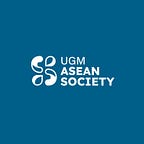ASEAN Single Window: A Catalyst for A Deeper Intra-Regional Trade Integration
By Lukas Singarimbun, Research Lead on ASEAN Economic Community of UGM ASEAN Society
Special thanks to Muhammad Saad Siddiqui, President of Cambridge University Southeast Asian Society, for the contribution in the making of this article.
ASEAN intra-regional goods trade has been a major booster in achieving a deeper regional economic integration as drafted in ASEAN Economic Blueprint 2025 which 50% consists of intra-regional trade policies and recommendations. Each of ASEAN Member States (AMS) agrees to cut trade barriers in order to increase the volume of trade in goods and services within regional organizations as outlined in ASEAN Free Trade Agreement (AFTA). However, after many treaties and documents related to trade agreement were signed and AEC Blueprint 2015 which supersedes by AEC Blueprint 2025, the volume of regional trade is still stagnant with the proportion of intra-ASEAN trade between 22%-24% in 2019. Notwithstanding that there is still an insignificant increase, ASEAN has reduced trade barriers such as tariff and quotas up to 99% in 2019. However, declining trade barriers percentage has depicted tremendous achievement and the willingness of AMS Leaders to pursue liberalisation and trade integration within the region. Furthermore, in enhancing regional trade volume, all of AMS also have agreed on ASEAN Single Window (ASW) in order to connect each of AMS National Single Window (NSW) as another strategy in increasing the volume and percentage of regional trade.
According to the United Nations Economic Commission for Europe, the Single Window system creates a circumstance that enables the smooth flow of information exchanges between parties which are involved in cross-border trade. It also allows entities to submit all information which was needed for export and import activities. Reducing time for trade procedures indeed can increase the business efficiency, reduce trade costs, and enhance the overall economic performance of the region. Furthermore, ASW also can be seen as a process in establishing information and document standardization in regional trade. Thus, ASW’s main purpose is to accelerate trade integration by enabling the electronic exchange of cross-border-trade related documents amongst AMS. ASW agreement was signed in 2003 and in 2017, ASW has started the Live Exchange in ATIGA e-Form with five AMS ratified this agreement namely Indonesia, Malaysia, Singapore, Vietnam and Thailand in 2018. By the end of 2019, as in the Chairman Statement of the 36th ASEAN Summit, all of AMS have joined ASW Live Operation where the grating preferential treatment would be based on ATIGA e-Form D exchanged through the ASW.
ASW could be a catalyst for increasing the volume of trade within AMS by expediting the cargo clearance process, reduces the cost and time of doing business, and enhances trade efficiency and competitiveness via electronic document-sharing. One study finds that by implementing cross-border paperless trade through SW, trade will increase up to 30% because of a deeper and cohesive connection between trade parties. Indeed, ASW has shown a formidable progress, in 2019 only ASW exchanged more than 500.000 of the ATIGA e-Form D, expediting cargo clearance and reducing paperwork for traders. Moreover, ASW will not only consist of ATIGA e-Form but AMS are also working to implement ASEAN Custom Declaration Document (ACDD), e-Phyto Certificate (phytosanitary certificate), e-Animal Health Certificate and e-Food Safety Certificate. Cooperation and integration on trade documents will indeed increase the efficiency and effectiveness of commodities flow within AMS. Arguably, by synchronizing ASEAN trade parties through ASW will benefit not only AMS but also private businesses. Because private businesses also involve actively and could utilize the benefit of this system through each AMS’s NSW system. In sum, through ASW, the AEC Blueprint 2025 goal for deepening economic and intra-regional trade integration can be achieved. Moreover, ASW is also very essential to achieve the AEC common goals namely; Single Market, Competitive Region, Equitable Economic Development and Fully Integrated Region.
However, ASW also needs to do an annual or biannual review to evaluate the implementation of ASW. ASEAN needs to ensure that the electronic trade-related documents are validated and updated since sometimes policy and agreement is not coherence with the implementation. Furthermore, other trade barriers and trade related issues such as trade infrastructure in AMS which inhibit the implementation of ASW need to be solved. ASW also should underline and ensure the accessibility not only by the government but also by private businesses. Hence, ASW which has been recognized and implemented by all of AMS can be sustained and foster the increment of intra-regional trade.
References
“About ASW.” Accessed July 22, 2020. https://asw.asean.org/about-asw.
ASEAN | ONE VISION ONE IDENTITY ONE COMMUNITY. “ASEAN Free Trade Area (AFTA Council).” Accessed July 22, 2020. https://asean.org/asean-economic-community/asean-free-trade-area-afta-council/.
“ASEAN Integration Report 2019.” Jakarta: ASEAN Secretariat, 2019. https://asean.org/storage/2019/11/ASEAN-integration-report-2019.pdf.
Athreya, Krishna B., and Monisankar Bishnu. “On the Efficiency of ‘Single Window.’” Economic Theory 43, no. 2 (2010): 207–26.
Martínez-Zarzoso, Inmaculada, and Santiago Chelala. “The Impact of Single Windows on Trade.” The World Economy, February 11, 2020. https://doi.org/10.1111/twec.12945.
